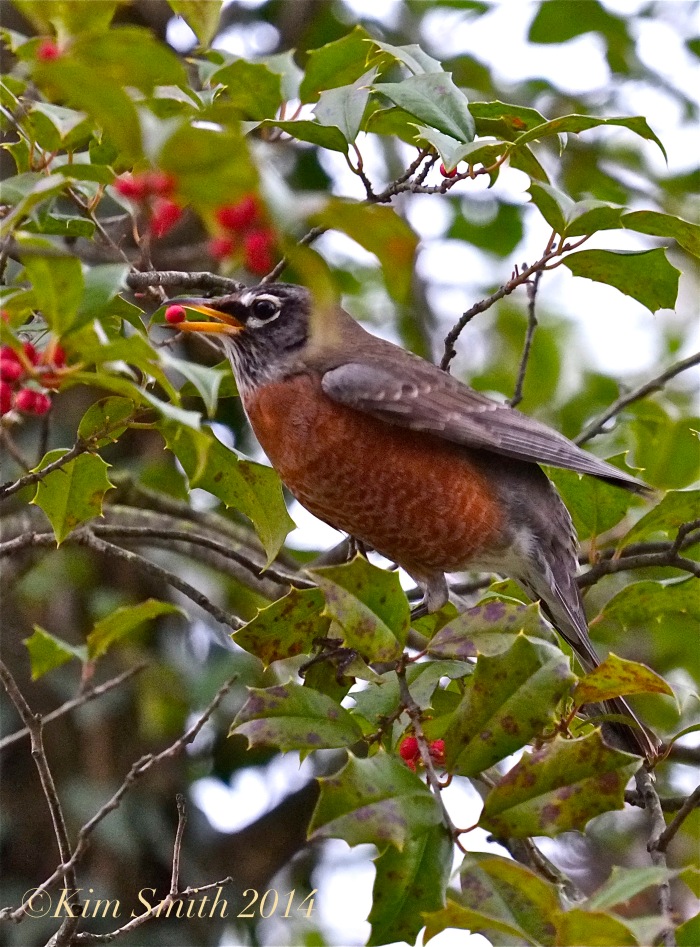
Right on schedule! Beautiful and welcome migrant flocks of American Robins arrive annually in Gloucester during the month of February, dining on local fruits, berries and fish fry.
During the winter months Cape Ann often becomes home to large flocks of robins, and we have had the joy of hosting numerous numbers in our garden. I can’t help but notice their arrival. Their shadows descend, crisscrossing the window light, followed by a wild rumpus in the ‘Dragon Lady’ hollies. This pair of hollies is planted on opposing sides of the garden path, alongside my home office. I have learned to stealthily sneak up to a window, as any sudden activity inside startles birds that are investigating our garden, and they quickly disperse. Dining not only on berries of the ‘Dragon Ladies’, but also the ‘Blue Princess’ Meserve holly and winterberry bushes, I find dozens of noisy, hungry robins.
These winter nomads flock to trees and shrubs that hold their fruit through January and February, feasting on red cedar, American holly, Meserve hollies, chokecherries, crabapples, and juniper. Robins traveling along the shores of Cape Ann also comb the shoreline for mollusks, and go belly-deep for fish fry. Depleting their food supply, they move onto the next location. Gardens rife with fruiting shrubs and trees make an ideal destination for our migrating friends.
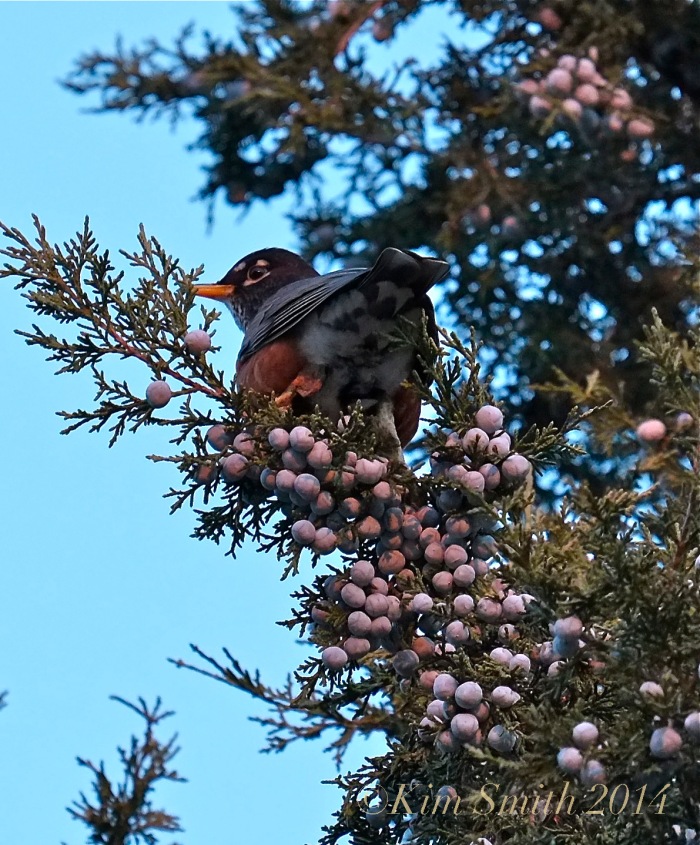 American Robin Eating Eastern Red Cedar Fruits
American Robin Eating Eastern Red Cedar Fruits
Habitat Gardening Tip:
The garden designed to attract nesting pairs of summer resident robins, as well as flocks of winter travelers, would be comprised of trees and shrubs for nest building, plants that bear fruit and berries that are edible during the summer and fall, and plants that bear fruits that persist through the winter months. Suburban gardens and agricultural areas provide the ideal habitat, with open fields and lawns for foraging insects as well as trees and hedgerows in which to build their nests.
The following plants, suggested with robins in mind, will also attract legions of songbirds and Lepidoptera. The list is comprised primarily of indigenous species with a few non-native, but not invasive, plants included.
Trees for nesting ~ American Holly (Ilex opaca), Eastern Red Cedar (Juniperus virginiana), Red Maple (Acer rubrum), Sugar Maple (Acer saccharum), Flowering Dogwood (Cornus florida).
Summer and autumn fruit bearing trees, shrubs and vines for robins ~ Black Cherry (Prunus serotina), Blackberry (Rubus spp.), Flowering Dogwood (Cornus florida), Gray Dogwood (C. racemosa), Red-osier Dogwood (C. sericea), Silky Dogwood (C. amomum), Elderberry (Sambucus canadensis), Apple (Malus pumila), Virginia Rose (Rosa virginiana), Highbush Blueberry (Vaccinium corymbosum), Lowbush Blueberry (Vaccinium angustifolium), Wild Grape (Vitis spp.).
Trees and shrubs with fruits persisting through winter ~ Winterberry (Ilex verticillata), Mountain Ash (Sorbus americana), Crabapple (Malus spp.), Sargent’s Crabapple (Malus sargentii), American Holly (Ilex opaca), Meserve Hollies (Ilex x meserveae), Eastern Red Cedar (Juniperus virginiana), Common Juniper (Juniperus communis), Chokecherry (Prunus virginiana), Smooth Sumac (Rhus glabra), Staghorn Sumac (Rhus typhina).
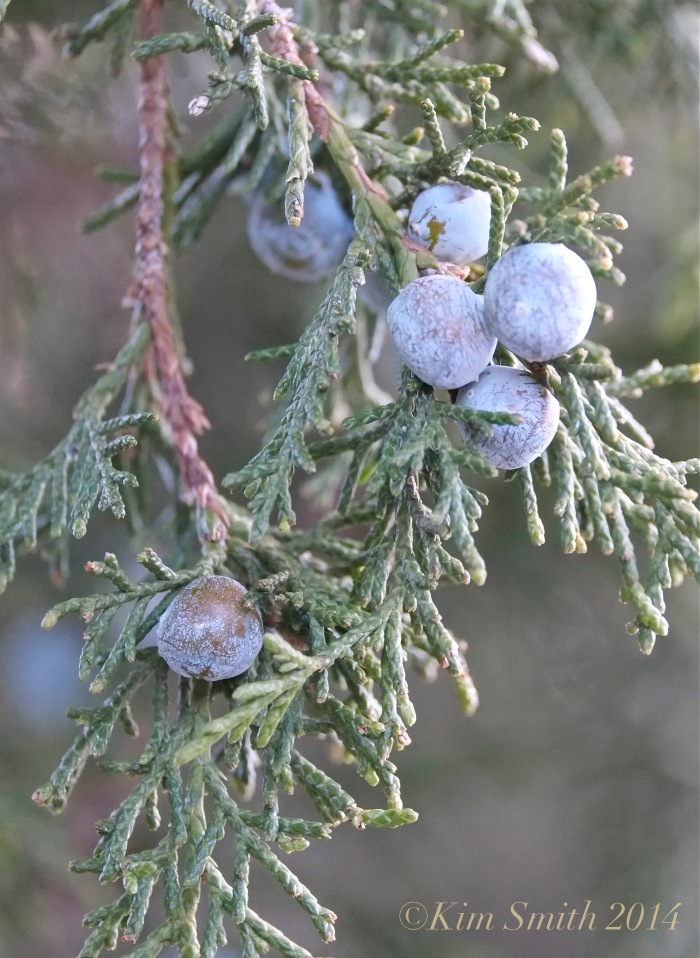
Bird Food: Eastern Red Cedar (Juniperus viginiana)
To read more see previous posts:
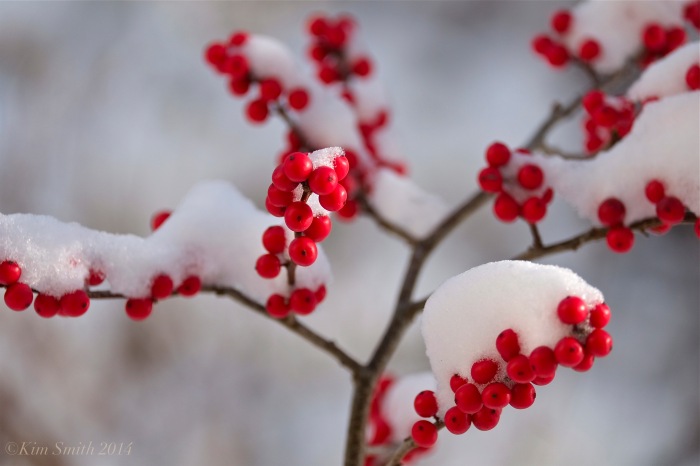 Bird Food: Winterberry (Ilex verticillata)
Bird Food: Winterberry (Ilex verticillata)
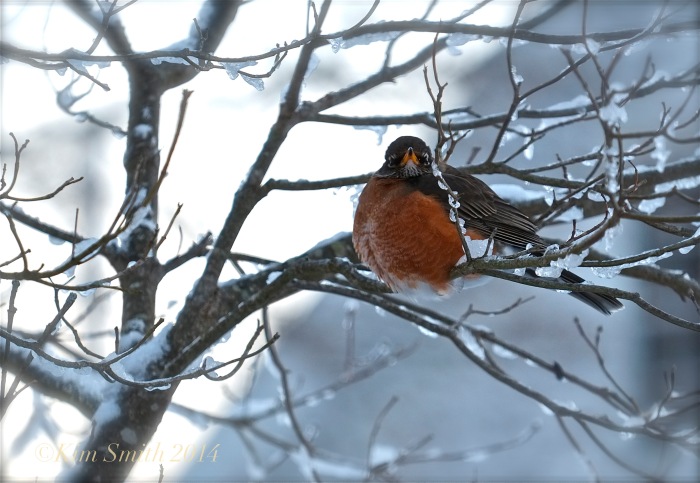 Robin at dawn this morning after the storm
Robin at dawn this morning after the storm
Spread The GMG Love By Sharing With These Buttons:







